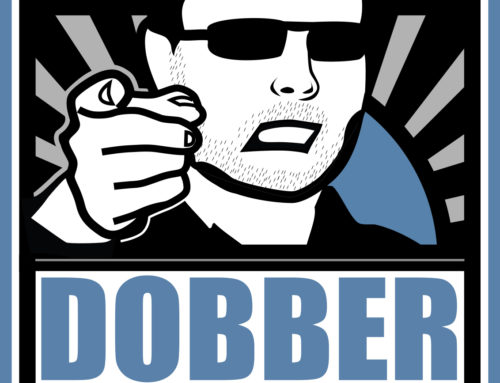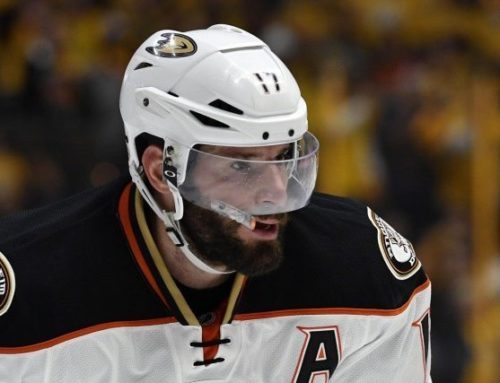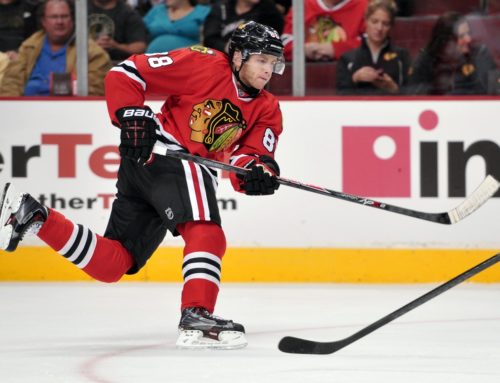Pop-Up Blockers
Justin Goldman
2009-12-07

Goldman uncovers/analyzes a new trend among young puckstoppers
When it comes to uncovering the next great goalie prospect for your keeper team, you always want to seek out those with elite lateral movement. Not only does excellent lateral quickness mean the goalie is better fit to post quality stats because they are squared up for rebounds, but they will also excel at combating traffic in front of the net, tracking the puck on high-speed odd-man rushes and staying upright for the second and third chances.
And since today's pro goalies need to constantly refine their style and footwork in order to move in the most efficient manner possible, those that possess superior lateral movement (not because of their athleticism, but because of their ability to track pucks effectively and execute) are more primed to become a valuable long-term keeper.
Just in the last week alone, I've seen Tuukka Rask, Semyon Varlamov, Jon Quick and Alexander Salak use an advanced butterfly recovery technique that is a perfect example of this refined and elite movement. It's called the "Pop-Up" recovery, and while it is extremely effective, it is not easy to perform on a consistent basis. Therefore, it comes as no surprise that the goalies I named above are some of the best young prospects in the game right now.
The pop-up recovery occurs when a goalie, already down in the butterfly, pops back up into their ready stance without using either knee as a pedestal for support. So they literally recover into their stance by lifting both knees off the ice at the exact same time. It takes a tremendous amount of core strength and balance to pull this off, but when executed correctly, the goalie benefits greatly from the efficiency and agility it provides. For this type of recovery, it is best to use when the puck is less than eight feet away from the goalie.
The pop-up recovery is effective because it creates stability and generates mobility. When the traditional back-side recovery technique is used, goalies take longer to execute a series or sequence of movements in order to get into position for a rebound shot. But the pop-up recovery not only takes less time, it generates better net coverage and gives goalies the ability to move either way laterally with more ease, power and speed.
Another benefit of the pop-up recovery technique is taking away space above the shoulders. In an era where the tight or calm butterfly style dominates the game, forwards are quickly learning to get the puck up in a hurry. They are being taught to change the aerial angle to such a severe degree that leg pads and chest protectors do not have a chance at stopping the shot. So being able to project the entire body upward and directly back into an original stance in a heartbeat is quite a beneficial "micro-adjustment" for a goalie's positioning and net coverage.
Micro adjustments are a necessary component to always being square to a shot and taking away a shooter's time and space. Those that fail to execute these minor adjustments, either by making very small shuffles laterally or making small pushes to get higher up in the crease, often get burned on shots that otherwise should be stoppable. Finally, the ability to be on one's feet when the puck is in the slot area means they have not committed to a shot. And we all know that goalies want to be as patient as possible and force the shooter to make the first move.
But as I said earlier, the pop-up recovery is not easy. Like most of the movements you see in the butterfly position, it takes an extensive amount of core strength to execute effectively at the NHL level. The pop-up recovery also takes a lot of muscle memory, more than most advanced butterfly movements. It takes a lot of practice, confidence and the understanding of when to employ this technique. If not executed perfectly, a goalie's upper body will be thrown off-balance and the result could be disastrous and embarrassing.
The pop-up recovery is considered "controversial" in the goalie realm because, while it has been around for years, there's no answer on whether or not it is truly effective. There is so much more I could discuss regarding the validity and the resourcefulness of the pop-up recovery, especially when compared to a normal recovery, but that is not the purpose of this article. The key is to recognize when a goalie uses it, how you can tell if it's being used properly and how it reveals that the goalie is a quality prospect with elite movement and footwork.
From my own personal experiences, I know that many goalie coaches tell their students to never use it, because it takes so much strength and balance that it is rarely done correctly. Other coaches consider it an effective way to re-set one's feet, quickly get back into a position and create more mobility. If I have a student that tries to use it, I simply ask why in order to make sure they understand the dynamics behind it. It's rarely used to perfection, so the pop-up recovery is considered a "flashy" move for goalies with a strong core…and a ton of confidence.
And to me, those are very good signs when it comes to scouting. So why does this seemingly simple technique have any importance in the fantasy realm? Because as the manager of a keeper or dynasty league, you want to have an edge on your competitors when it comes to drafting or acquiring goalies that may seem like common prospects, but show flashes of brilliance or advanced skills.
Although the pop-up recovery is not a new technique by any means, it is rarely used because of its difficulty. So if you find a prospect that uses it well, you know he has great balance, excellent body control, great agility and quality focus. Therefore, the odds are good that he is way ahead of the learning curve and could really succeed in the NHL.





 BUF
BUF N.J
N.J PHI
PHI MIN
MIN WPG
WPG VAN
VAN TOR
TOR CGY
CGY SEA
SEA